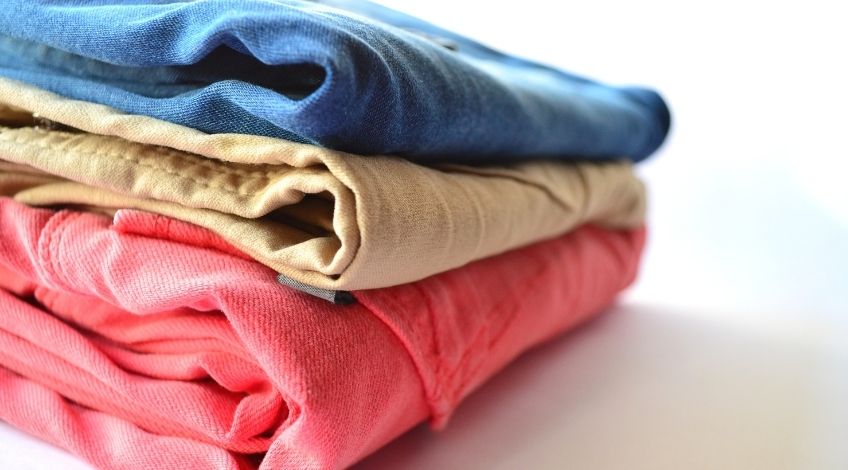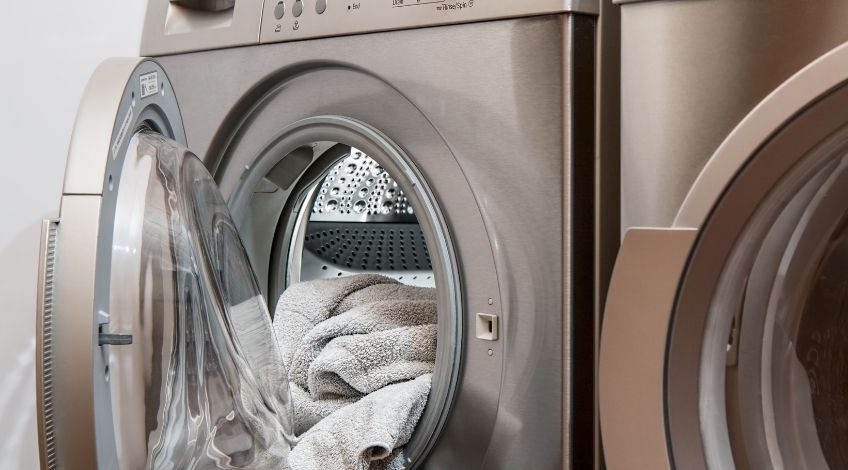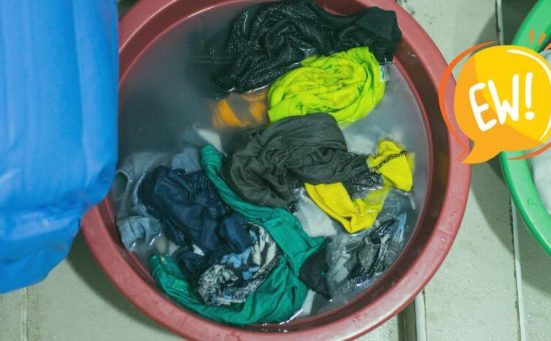
Do Heated Airers Cause Damp? (everything you need to know)
Drying laundry in the UK can be problematic with heavy rain showers and damp, cold winds, and that’s only during the summer months! Many of us are looking for relatively cheap convenient ways to get our laundry dry indoors when the weather is too bad outside.
One solution is to use a heated airer, but will it cause damp? The short answer is that although the heated airer itself won’t cause damp, the laundry drying on it could. However there’s way more to it than that, keep reading for the full story.
What Is A Heated Airer?
Many of us have clothes horses or airers at home to dry clothes during inclement weather. Airers consist of metal bars that clothes can be arranged on to allow air to flow around the clothes and remove moisture.
As the moisture passes into the air, the clothes get dryer. Over the space of many hours the clothes become fully or almost fully dry.
Heated airers look very similar to regular airers except for the addition of an electrically powered heating element that heats up the bars and reduces the drying time for the clothes.
Where Does The Moist Air Go When Clothes Are Drying On A Heated Airer?

Whether you use a regular airer or a heated airer, as the clothes dry they evaporate moisture into the air. That moist air will condensate onto the first cool surface it lands on.
This is very often a wall, ceiling, wooden surface or window pane. The condensed moisture becomes liquid and settles firstly onto the surface before eventually soaking into whatever absorbent surface it gets onto.
In the case of a window, the moisture will run down the window and drip onto the wooden window sill or drip onto the wooden floorboard and eventually lead to the wood rotting.
You might notice wallpaper peeling from walls or black mould forming. These are all the result of excessive moisture in the home.
What Causes Moist Air?
As we’ve just said, drying wet laundry indoors causes moisture to evaporate from the clothes which turns back into liquid as soon as it touches a cool surface. However, wet laundry isn’t the only cause of moisture and dampness.
The hot water flowing when we shower or bathe also condensates into moisture on walls, windows, floors, ceilings etc. As does any moisture from boiling saucepans and to some extent the air we breathe out also contains water droplets.
For the purpose of this article we’re going to focus on heated airers, and how to deal with the moisture they cause.
How Does A Heated Airer Cause Moisture?
The heat from the airer passes into the clothes arranged over the airer’s bars. This causes the moisture in the clothes to turn into water vapour. That vapour gets carried through the now moist air and settles on the first cool surface it finds and condensates back into liquid form.
So it’s not the heated airer as much as the wet clothes that causes the moisture or dampness. But the heat from the airer facilitates the evaporation from the wet clothes that leads to moisture forming in the air.
How Can You Reduce The Dampness Caused by Drying Clothes On A Heated Airer?

There are several things you can do to reduce the amount of damp air in your home even during winter months. These include;
Give The Clothes An Extra Spin
Most washing machine programmes end on a spin cycle, but it’s always a good idea to run an extra spin at the end to remove as much water as possible from your clothes.
If the clothes are robust enough, go for a faster spin speed on the final spin to remove even more water from the fabric.
Improve Ventilation
The easiest way to improve ventilation in the room where the heated airer is set up is to open a window. If the weather is bad, you might want to slightly crack open the window, it only needs to be open far enough to allow that moist air a way of leaving the room.
To prevent the whole house from becoming cold, it’s a good idea to close the door to the room. This will prevent the cold air permeating into other rooms.
Use An Electric Fan
To help remove that excess moisture produced from the evaporation process, you can direct a fan to blow the moist air towards the window.
This will not only reduce the amount of moisture accumulating in the room, it will also speed up the drying process. This is because there comes a point when the air cannot absorb any more moisture.
This is particularly true of the air directly around the clothes as they dry. By moving that moist air away from the clothes, it allows more moisture to be released by the wet fabric thus speeding up the whole drying process.
Use A Dehumidifier
Dehumidifiers work by removing moisture from the air. They do this by sucking the moist air into the unit where it passes over a condenser that turns that vapour into water which is stored in an inboard water tank.
The remaining air is then passed over the compressor which heats it up and sends the heated air back out into the room. This also speeds up drying times.
Using a fan in conjunction with a dehumidifier can seriously reduce drying times.
SEE ALSO: Best Dehumidifier For Drying Clothes Inside
Use An Extractor Fan
If possible, set the heated airer up in a room which has an extractor fan. This will remove most of the moist air from the room and solve the problem of condensation which leads to dampness and mould etc.
Use A Cover
Many heated clothes airers come supplied with a cover. The cover keeps all of the heat and moisture contained. This gets the clothes dry faster and prevents the moisture from escaping and condensating on your walls etc.
If your heated airer never came supplied with a cover, they can often be purchased separately or you could use a bed sheet. Just ensure the bed sheet is tucked in all around the airer to prevent heat and moisture from escaping.
Limit Drying To Thin Fabrics
This solution is less than ideal but can help to reduce moisture buildup and condensation. Just use the heated airer to dry thin cotton and linen items.
Thick, bulky items are likely to absorb more water and retain more of that water even if given an extra spin. This means they will take far longer to dry and release way more moisture than thinner items.
Use Air Conditioning
Many people only use their A/C units in the hot summer months. But A/Cs work by reducing humidity levels this can be used to your advantage when using a heated airer.
By setting the A/C at a comfortable level, it is possible to remove any unwanted excess moisture from the room.
Does A Heated Airer Cause Dampness?
It’s not the heated airer that causes damp, it’s the wet clothes that are on the airer. As the moisture evaporates from the drying clothes it fills the surrounding air with water molecules.
It’s this damp air that lands on cooler surfaces and condensates back into a liquid form. It’s this liquid that causes the problems associated with dampness.
As we have seen, there are ways to combat this which include;
- Giving clothes an extra spin
- Opening a window
- Using an electric fan
- Using a dehumidifier
- Setting the heated airer close to an extractor fan
- Using a cover on the airer
If you notice any of the effects of dampness like peeling wallpaper, rotting wood, ceiling stains or black mould patches, you will need to address these issues before they become structural.
In extreme cases, ceiling joists or floor joists could rot which could prove very costly. Redecorating can be costly enough without the extra expense of any structural repairs.
SEE ALSO: Best Bladeless Fans You Can Buy Today
Frequently Asked Questions
Heated airers don’t cause condensation, it’s the moisture that evaporates from the drying clothes that condensates on cool surfaces.
Whilst you don’t need a dehumidifier with a heated airer, it will help to reduce condensation levels and speed up the drying process of your laundry. Dehumidifiers remove moisture from the air which reduces dampness and allows more moisture to be released from the drying clothes.
The moisture produced by the drying clothes arranged on a heated airer goes directly into the surrounding air. Which is why it’s a good idea to open a window to allow that damp air a means of escape to prevent condensation and dampness.
Also, follow us on Pinterest ...



